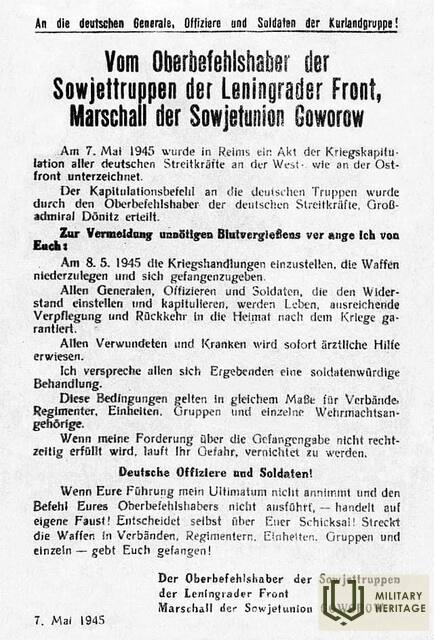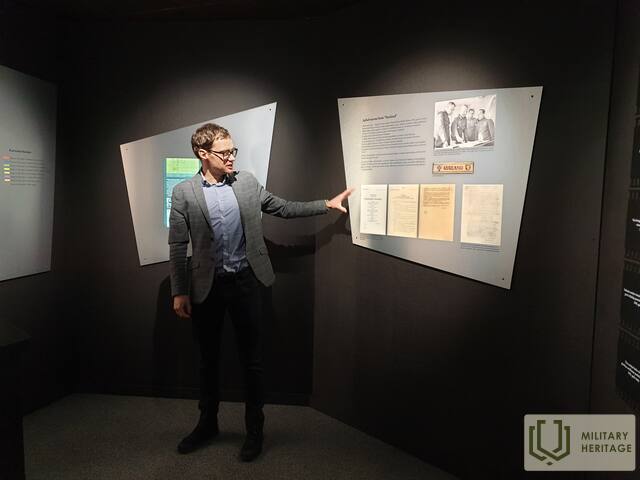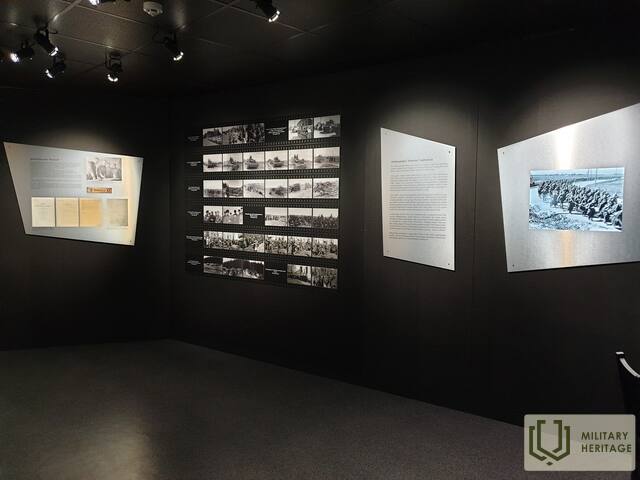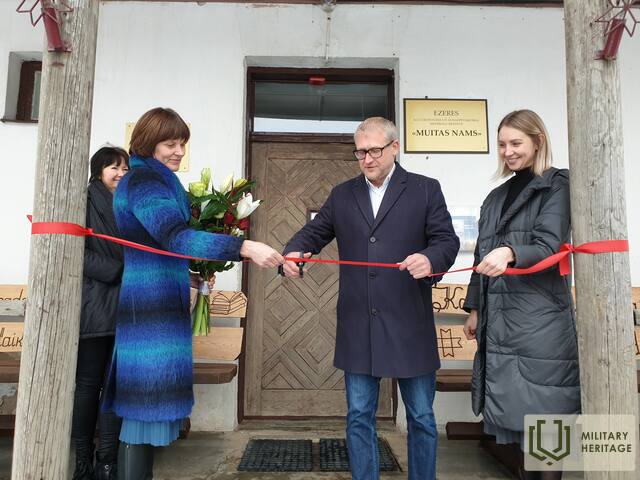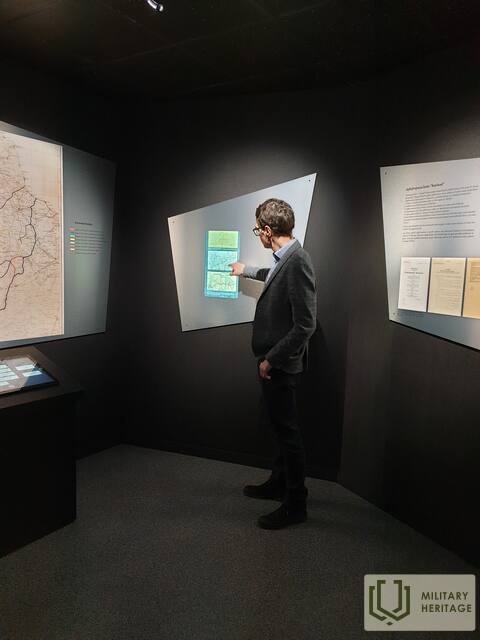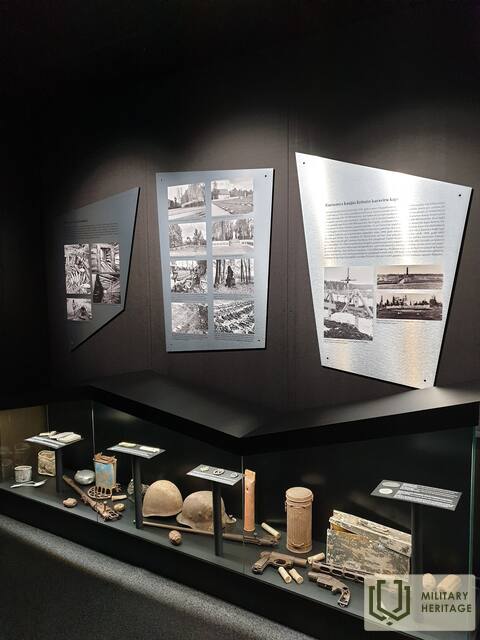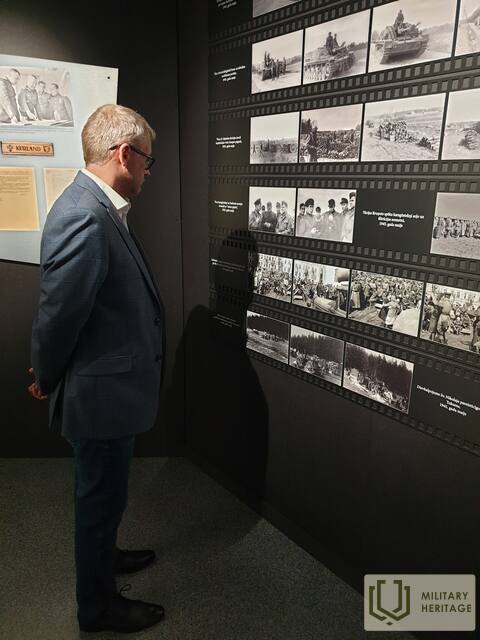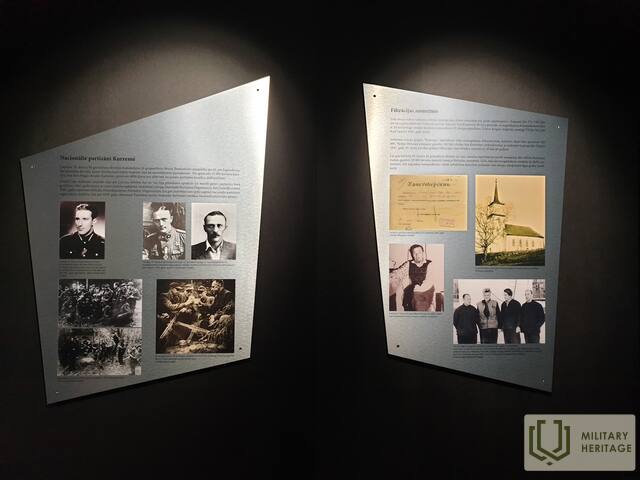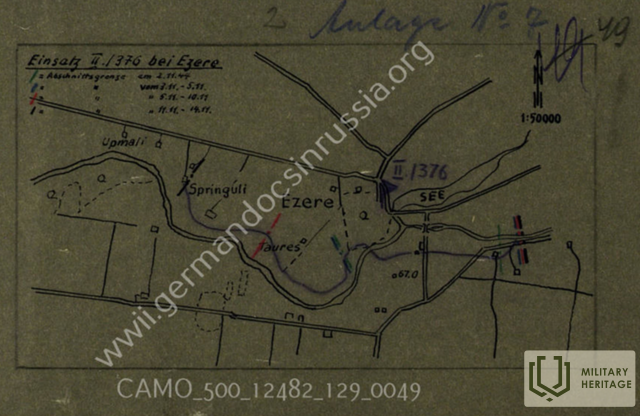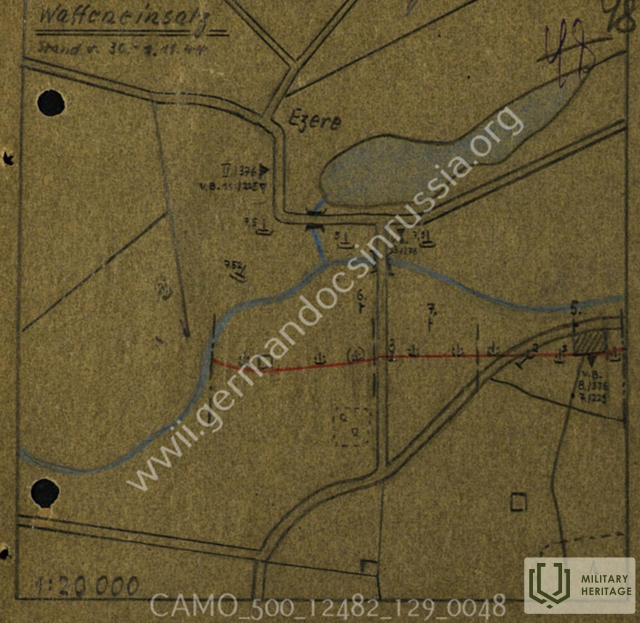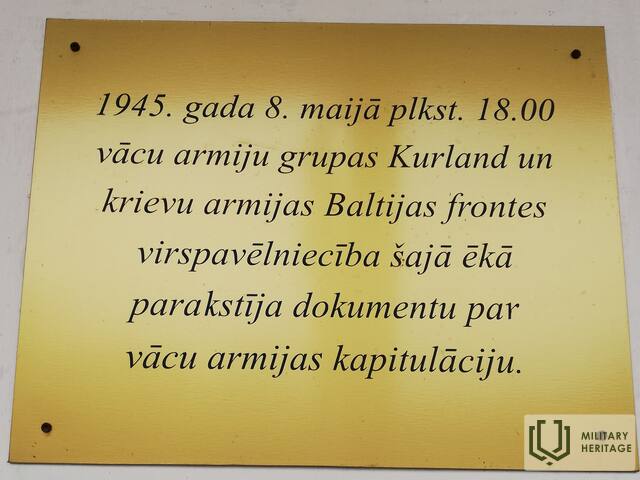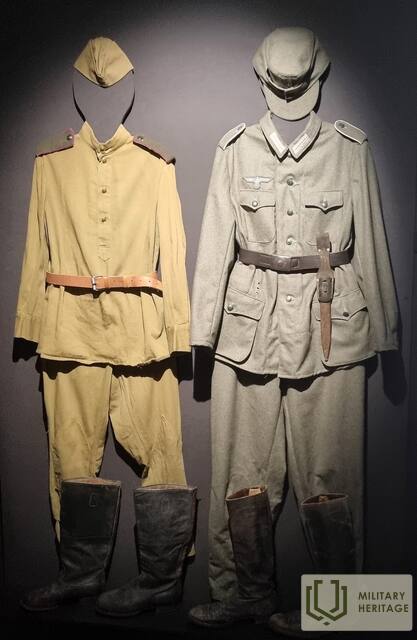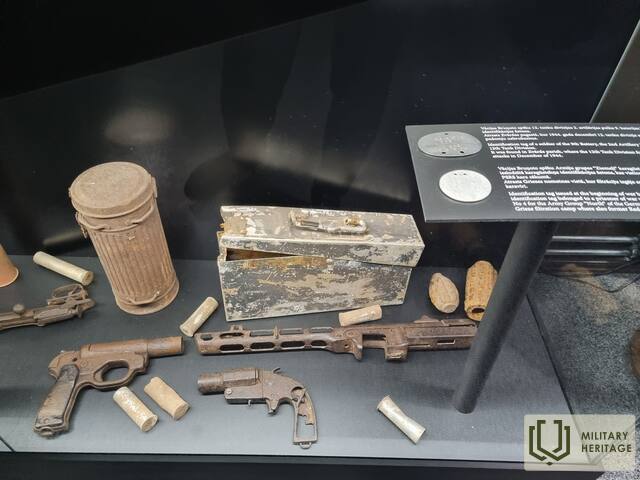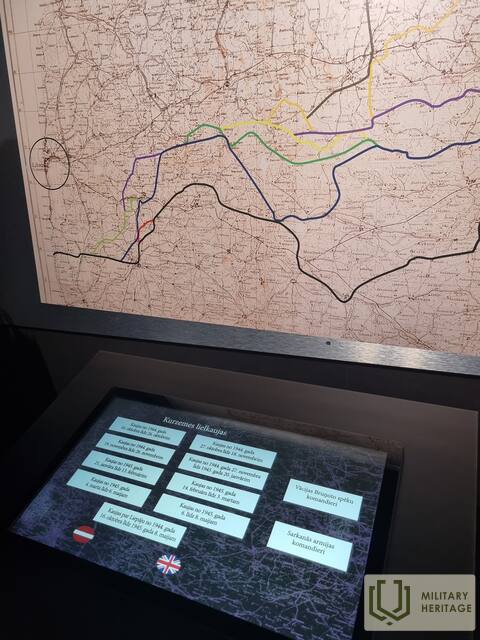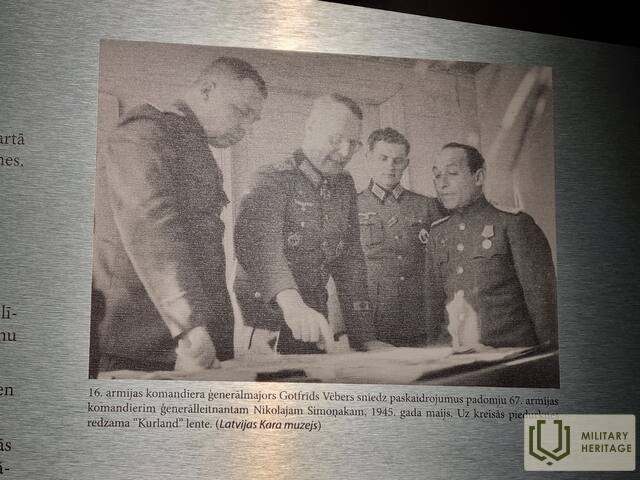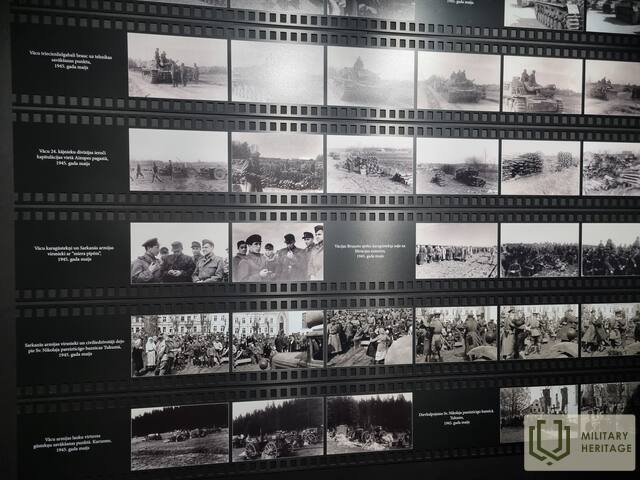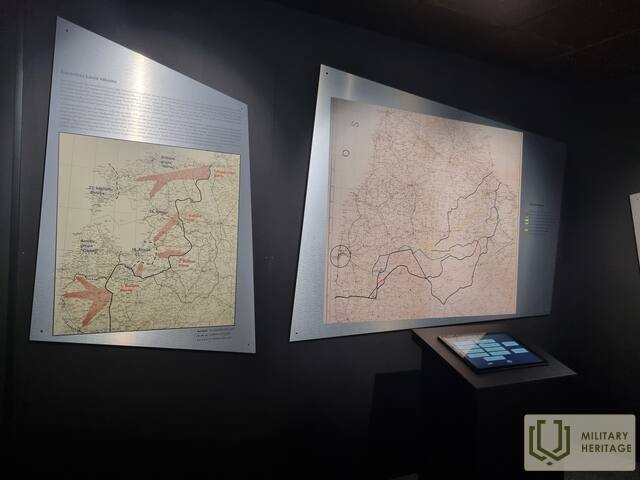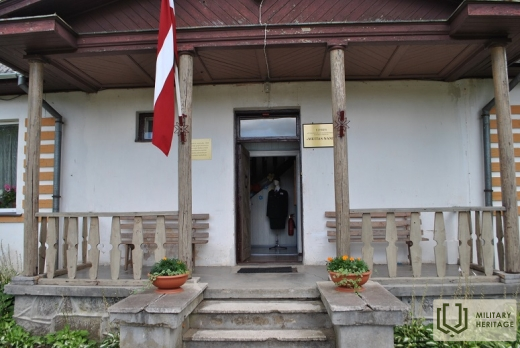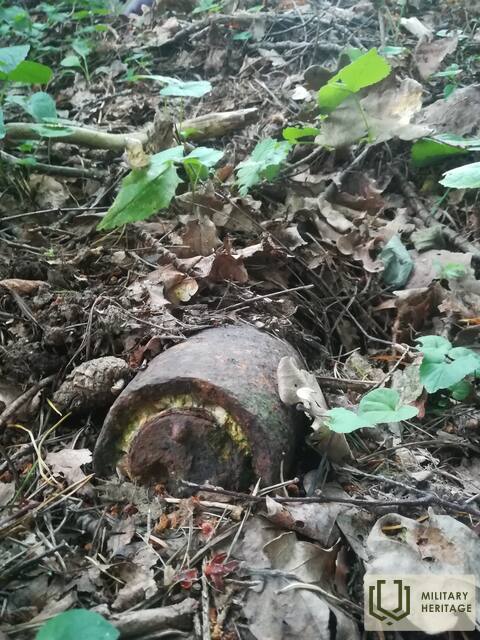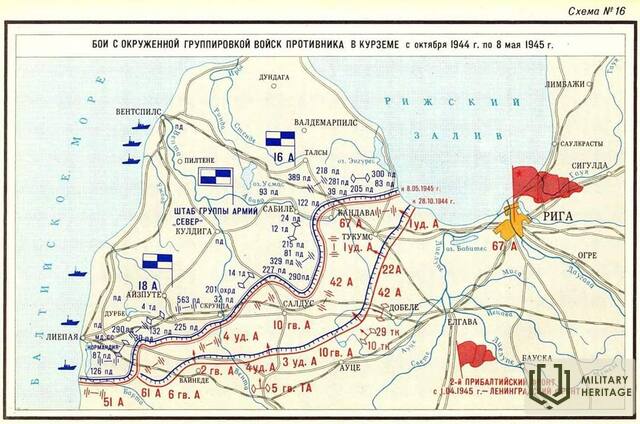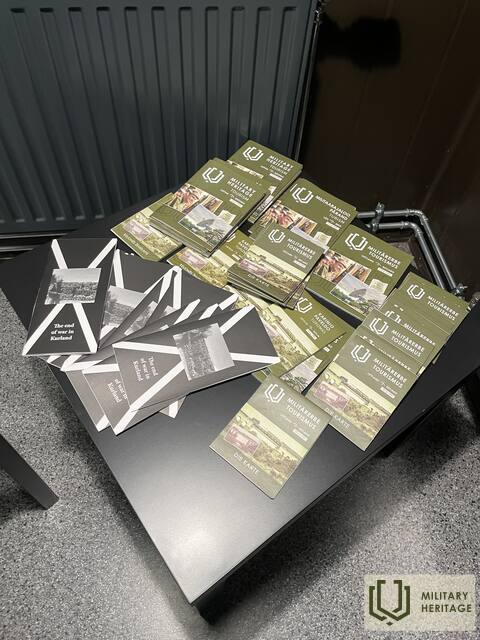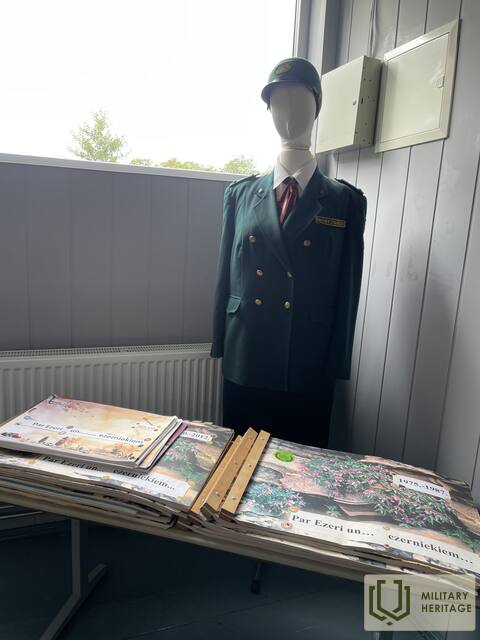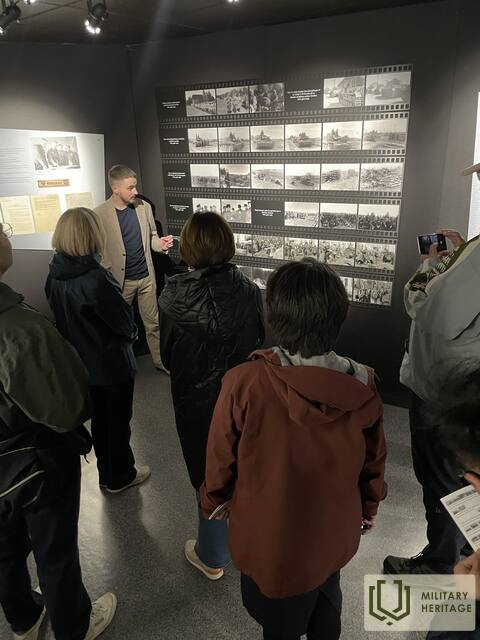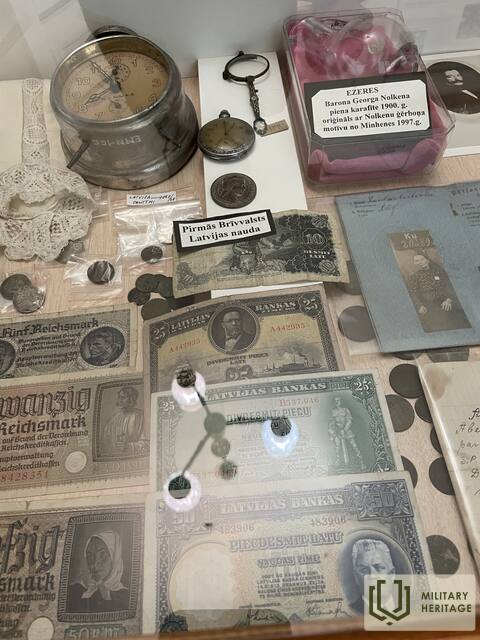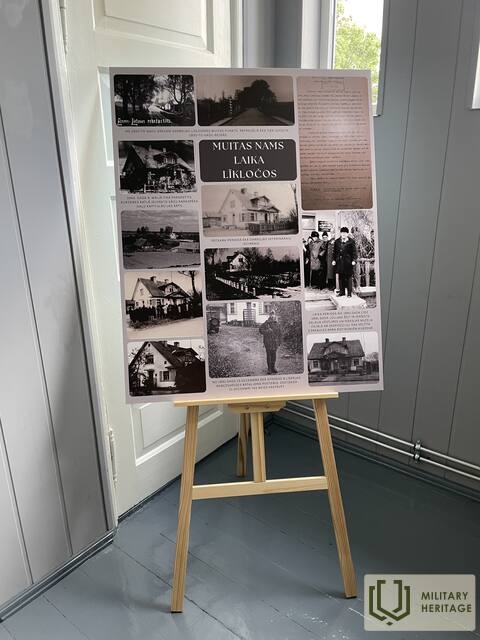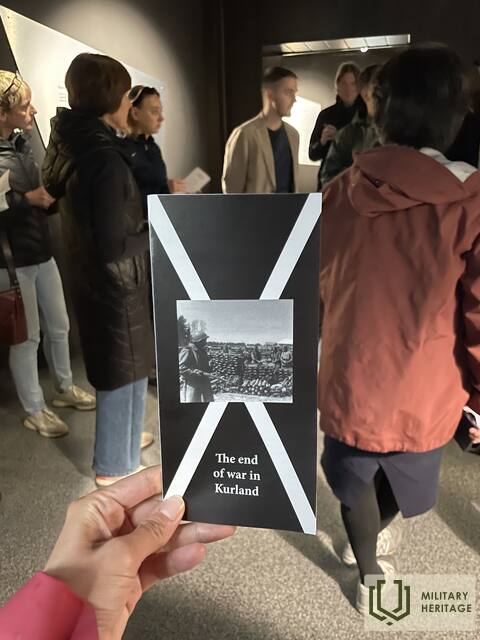Ezere local history repository “Muitas Nams” (Customs House)
Museum

The Ezere Customs House is located in Ezere near the Saldus-Mažeikiai highway at the Latvian-Lithuanian border. The act of surrender of the German Army units ‘Kurzeme’ (Kurland) surrounded in the so-called ‘Courland Pocket’ was signed in this building on 8 May 1945. It is believed that World War II actually ended in Ezere. The customs house has an exhibit covering the events of the end of World War II and exhibits detailing the history of Ezere parish from ancient to modern days. In the morning of 7 May 1945, the commander of the Leningrad Front, Marshal L. Govorov, sent an ultimatum to the command of the army group ‘Kurzeme’ to lay down arms. The act of surrender was signed by the involved parties on May 8 and it detailed the procedure of surrender, weapons collection points, documents and information to be submitted and other practical measures.
Used sources and references:
https://turisms.saldus.lv/kur-doties/ko-skatit/muzeji-un-kolekcijas/
Educational programs
Excursion through the "Muitas nams" repository of cultural history and local history materials of Ezere
During the excursion, visitors have the opportunity to see a modern and interactive exposition "End of hostilities in Kurzeme" about the end of hostilities in Latvia and the signing of the act of surrender of the army group Kurzeme in Ezere. It also emphasizes the consequences of warfare today, where the evidence of World War II is not only history, but also everyday reality. The exposition is multi-layered and intended for both students and those interested. Also, with foreign visitors in mind, the content is also available in English. To appeal to history enthusiasts, in the in-depth part of the exhibition content, there is an opportunity to find specific, detailed information about the army units of the warring parties in Kurzeme at the end of the Second World War. In the storage, you can also learn about the history of Ezere Parish, personalities and events in different time periods.
Related timeline
Related stories
Air-assisted Edgars Auniņš's memories of the end of World War II Lake Ezere
Excerpt from a memoir about the surrender of Kurzeme in May 1945, from the memoirs of Air Lance Corporal Edgars Aunins
Discovery at the site of the Grieze filtration camp
Various objects belonging to former soldiers are often found at the site of the Grieze filtration camp and along the roads leading to it. Soldiers, arrested civilians, prisoners of war, etc. disposed of them for various reasons, both to avoid being identified and to avoid being subjected to "special attention".
Missing German soldiers during the Battle of Courland - Karl Grimm
The records of the German army group "North", later renamed "Kurland" during the siege of Courland, still do not contain clear information about the approximately 50 000 German soldiers. These soldiers are listed as missing. Even today, the relatives of these soldiers are trying to find traces of their relatives and ancestors in Kurland, both documentary and physical. One such story is that of Karl Grimm, a German soldier from Swabia (a historical region in south-west Germany, at the source of the Rhine and Danube rivers), whose war career was cut short on 27 October 1944 at the Krūmi home near Vaiņode (5 km to the NW from Vaiņode, Latvia)
Missing German Army Soldiers During the Battles of Courland - Herman Fauls
The documentation of the German Army Group "North", which was later renamed "Kurland" during the siege of Kurzeme, still does not contain clear information about approximately 50,000 German army soldiers. These soldiers are listed as missing in action. Even today, relatives of these soldiers are trying to find traces of their relatives and ancestors in Kurzeme, both documentary and physical. One such story is about Herman Faul, who has been missing since December 27, 1944 - the 3rd Battle of Kurzeme, or Christmas Battles.
"Digging is better than burrial!"
The order of the Army Group “Kurland” is: "Build and build!" It is a task for every soldier of the front of the rear services. Which is best marked by the word: "Digging is better than burrial!"
"The war is not over until the last soldier is buried" (Saldus German Soldiers' Cemetery)
Kurzeme emerged as a separate and distinct battlefield on 10 October 1944. Some 500 000 German troops were counted as surrounded. According to reports from the 1st Baltic Front Headquarters, only a "small effort" was needed to completely liberate the entire Baltic coast. However, the fighting in Kurland continued for another seven months and Kurland became a symbol of the end of the Second World War.
During the seven months of fighting until May 1945, German forces in Courland lost 154 108 soldiers killed, wounded and missing. Since 1997, a war cemetery survey and reburial of soldiers near Saldus has been carried out and currently 27,000 names of fallen soldiers can be found here
Pieta or "Māmuļa" Memorial Ensemble in Nīkrāce
Pieta, or Mammy, is a well-known motif in European culture and art, and was also used in Soviet times.
Ashtray with panther head from German fortification lines
The last fortification lines of the army group "Kurzeme" were located in the vicinity of Krotė and many objects related to the Second World War have been found there.
Jānis Sūnas's memories of his time spent in the Grieze filtration camp
Lawyer Jānis Sūna has published his memories of his time in the Grieze filtration camp in his autobiographical book.
Memories of Jānis Miesnieks, a native of Ezera, about the end of World War II in Ezera
The Ezere Cultural History and Local History Museum "Customs House" is located in a historically significant building. On May 8, 1945, the act of capitulation of the Nazi German army units encircled on the Kurzeme Front was signed here.
Former Ezer resident Jānis Miesnieks (born 1930) shares his memories of the events of that day.
Memories of Kārlis Liberts about the day of the surrender of the German army in Ezere
The Ezere Cultural History and Local History Materials Repository "Customs House" is located in a historically significant building. On May 8, 1945, the act of capitulation of the Nazi German Army Group "Kurland", which was surrounded on the Kurzeme Front, was signed here.
Former Red Army soldier Kārlis Liberts shares his memories of the events of that day.
Regional researcher Žanis Skudra receives 10 years in prison for "Diary of Occupied Latvia"
Žanis Skudra devotes all his free time to local history, all his vacations to traveling around Latvia. This is how he accumulated materials, took photographs, and created the "Book of Occupied Latvia Days", which is published by the Latvian National Foundation in Stockholm under the pseudonym Jānis Dzintars.
On June 7, 1978, Žani Skudra was arrested in Tallinn and in November of the same year, the Riga Supreme Court sentenced him to twelve years in prison for treason and espionage.





